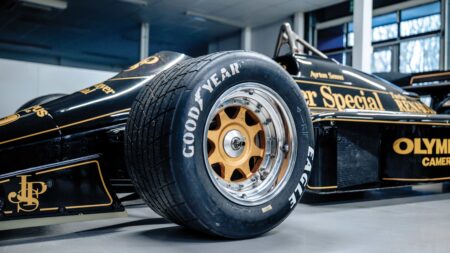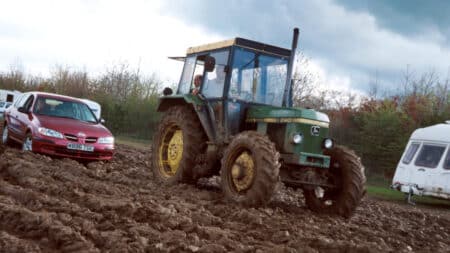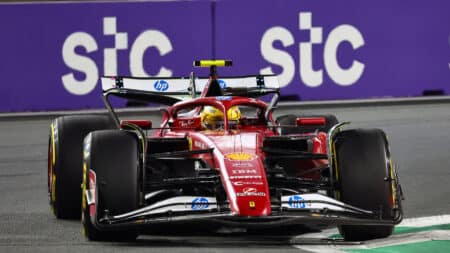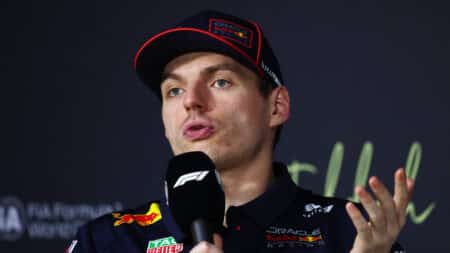
Senna's Lotus 97T: exclusive shoot of F1 legend's first winner
It's 40 years since Ayrton Senna's incredible first F1 win at Estoril – we captured the brilliant grand prix car he did it in for this month's magazine
A series taken from the 162-page Motor Sport special 100 Greatest Grands Prix (other specials are available here).
Jean-Pierre Beltoise had come close to winning a GP several times since his debut in 1966 but, at 35, time was running out. Plus he had coped for eight years with an injury that reduced his locked left arm to not much more than a steadying prop.
Hence the undeniable sense of his released frustration in the early stages of this race.
The Frenchman’s BRM bolted from the second row and squeezed by the Ferrari of Jacky Ickx on the run to a Ste Devote recently narrowed by new Armco. It was a do-or-die manoeuvre. Beltoise knew that this was his big chance. His torquey V12 was competitive and the Manchester-like rain would ease the strain on his arms; he was forever asking the team to lighten his steering. With a clear view ahead, he sawed, all arm and elbow, at the wheel and skittered between kerbs. The chasing Ickx, in contrast, was smoothness itself; the Belgian wet-weather ace was also slower than the inspired leader.
After 20 laps of near mania, Beltoise settled into a necessary rhythm. It was going to be a long race, so slow was the average speed. It was a busy race, too. Retirements were few and the leader was forever picking off slower cars. Chris Amon, for instance, finished three laps in arrears in his Matra and yet still scored a point. Fourth-placed Jackie Stewart, suffering the symptoms of the ulcer that would cause him to miss the next GP, was two laps behind in his misfiring Tyrrell.
And pole-sitter Emerson Fittipaldi finished a lapped third in his Lotus.
There was a hazard cloaked in mist around every corner of the soaked street circuit – only one of the seven DNFs did not result from an accident – and yet Beltoise single-handedly navigated them all. PF
The 1972 Monaco Grand Prix on the Database
About 100 Greatest Grands Prix | From the editor Damien Smith
The Grand Prix motor races we can never forget…
Welcome to this special one-off magazine, dedicated to our love of Grand Prix racing and produced by the same team that brings you Motor Sport each month.
It seemed a good idea: whittle down 107 years of racing history to come up with 100 GPs that could be considered the ‘greatest’ – then rank them in meritocratic order. By week three, the old grey matter was beginning to ache…
Defining greatness was the first task. There were the obvious races – the wheel-to-wheel duels, the comeback classics. But there were also individual performances of supreme dominance, races that might not necessarily have been the most exciting to witness. Greatness goes way beyond thrill-a-minute, we decided.
Then there were those races of prominence, attached to a certain time or place that made them hugely significant. I’m thinking specifically of Belgrade, 1939. Only five entries took the start of a race that didn’t sound particularly scintillating. But as it happened to take place on the very day WWII broke out, we felt it worthy of inclusion. Meanwhile, Sebastian Vettel’s remarkable maiden GP win at Monza in 2008, for lowly Scuderia Toro Rosso, was left on the cutting room floor. Is that fair? You decide. We also opted to include a few races that weren’t Grands Prix, leastways in name, although the strength of entry was such that they might as well have been…
Choosing which races should make the list was hard enough; ranking the top 100 in some sort of order was even tougher, especially when it came to the crunch: which should be number one? We never did agree unanimously on the ‘greatest’, but if the magazine was to be finished a decision had to be taken. And that’s what I’m here for!
Will you agree with our choice and order? Probably not. But if steam begins to issue from your ears, take a deep breath. In any exercise such as this, there is no definitive list – because there can’t be. Our top 100 is based on opinion, nothing more, designed to be a bit of fun and to spark good-natured debate among fans of the world’s greatest sport.
So turn the page, delve in – and whatever you do, don’t take it too seriously.

It's 40 years since Ayrton Senna's incredible first F1 win at Estoril – we captured the brilliant grand prix car he did it in for this month's magazine

Twenty-five years ago, the British GP was the subject of a 'prank' by the powers that be as Bernie Ecclestone and Max Mosley made the BRDC hold the race on Easter Sunday. But the chaos that ensued didn't have the desired effect, as Matt Bishop recalls

Lewis Hamilton left Saudi Arabia in a downbeat mood after finishing 30 seconds behind Charles Leclerc. Like in 2024, the Briton is struggling to find answers

The 2025 Saudi Arabian GP delivered a pivotal shake-up in the title battle, as Piastri claimed victory in Jeddah to take the lead the lead in the standings. Here are the main topics from the fifth round of the season